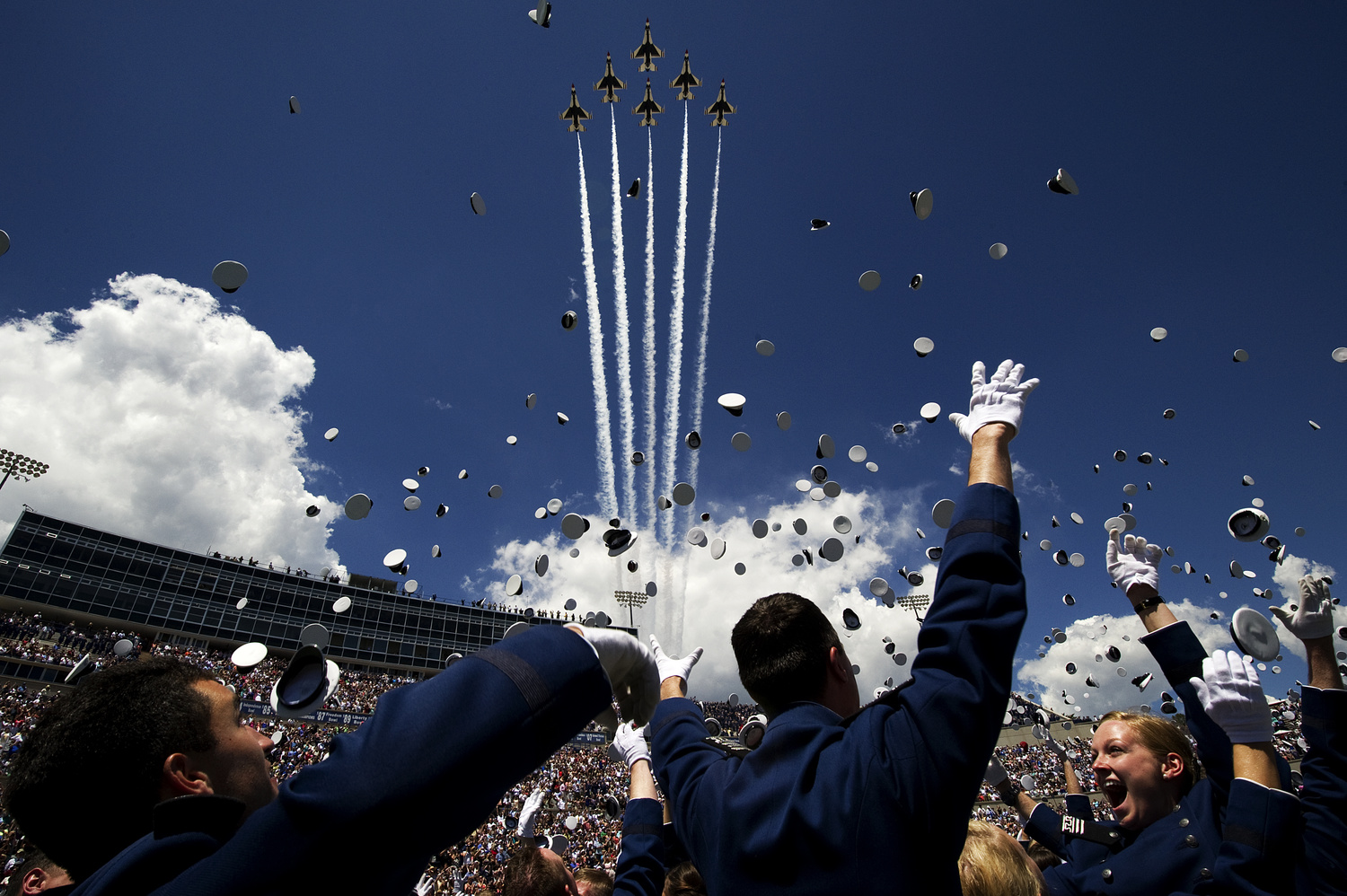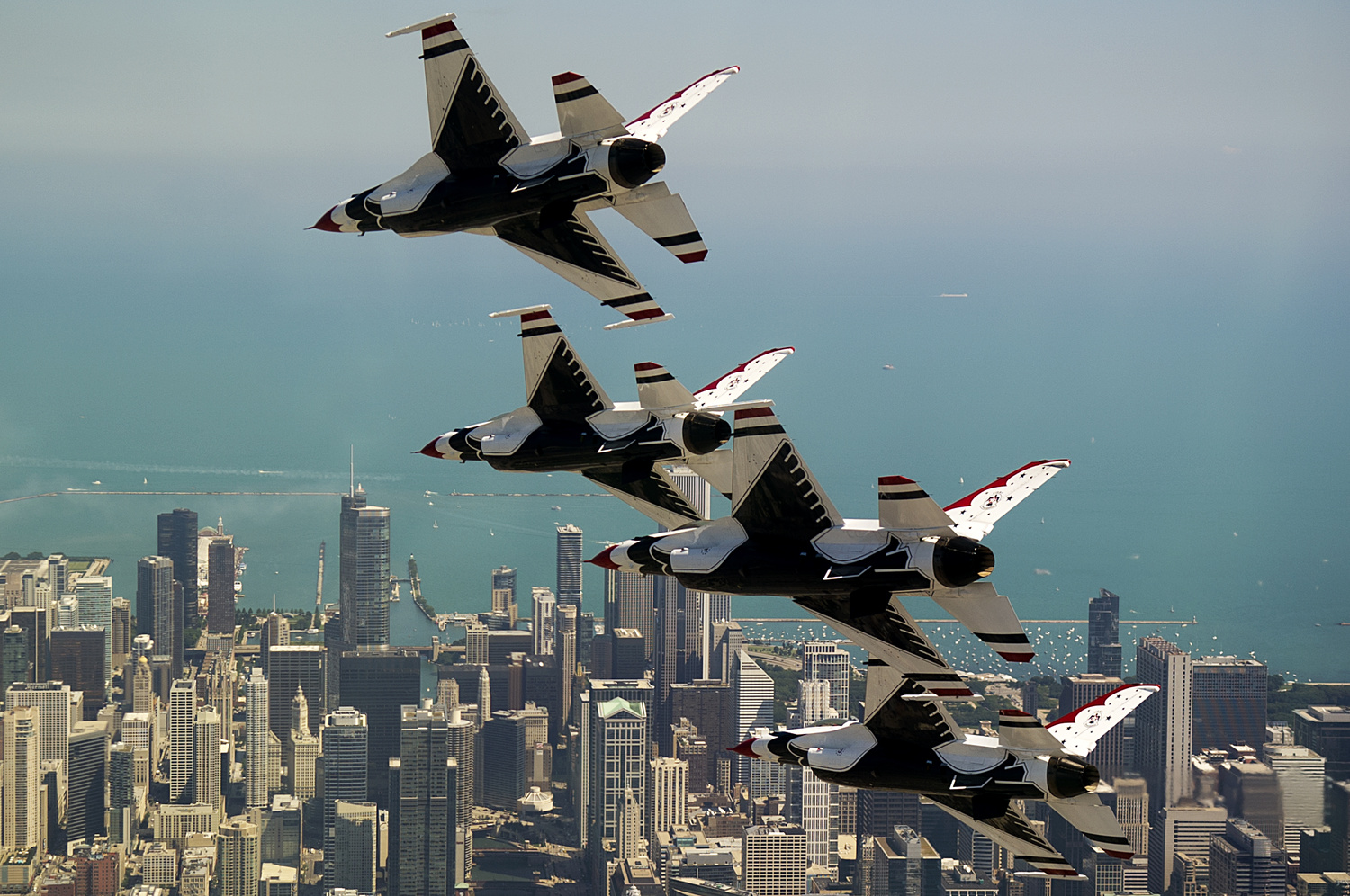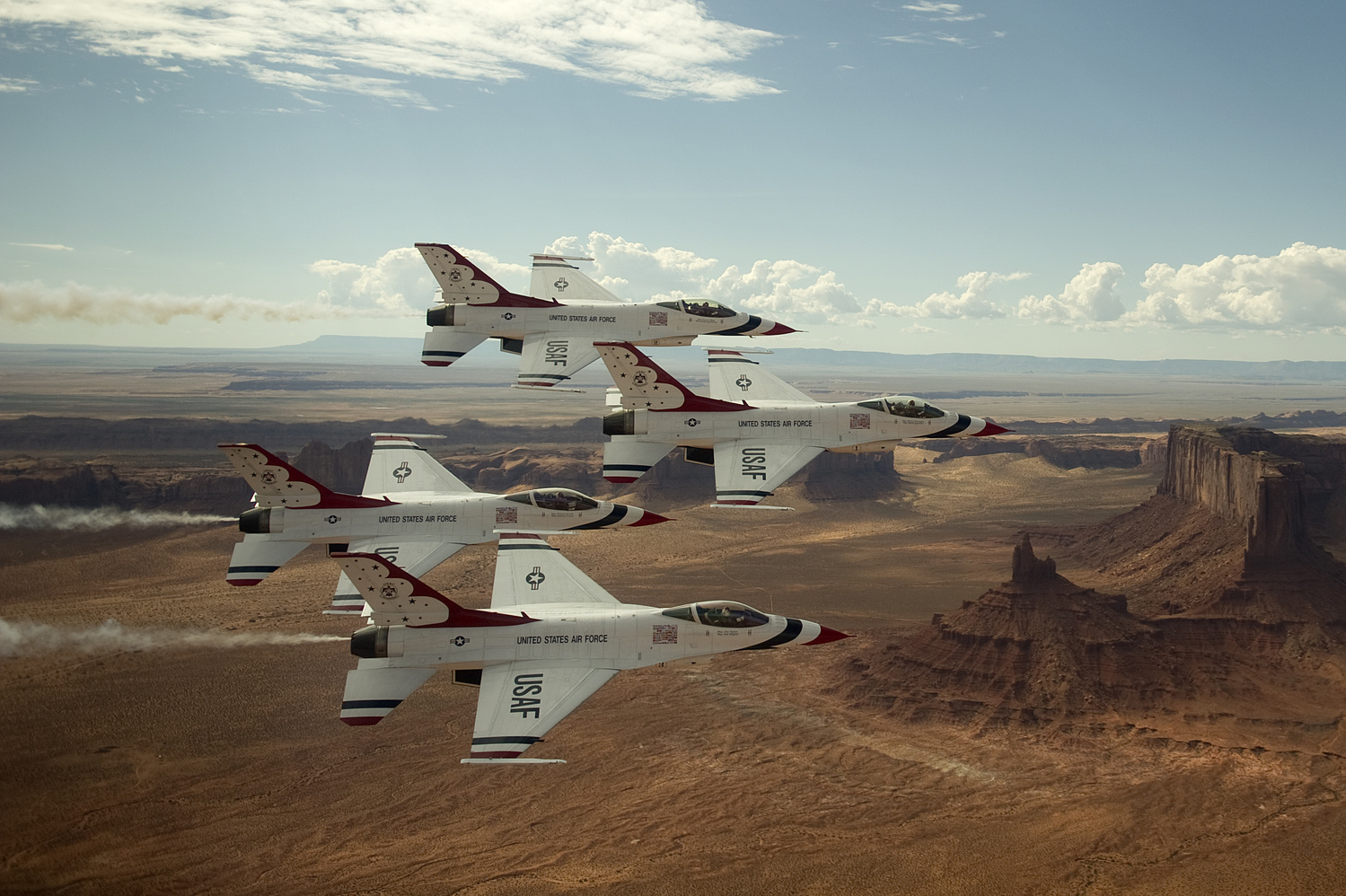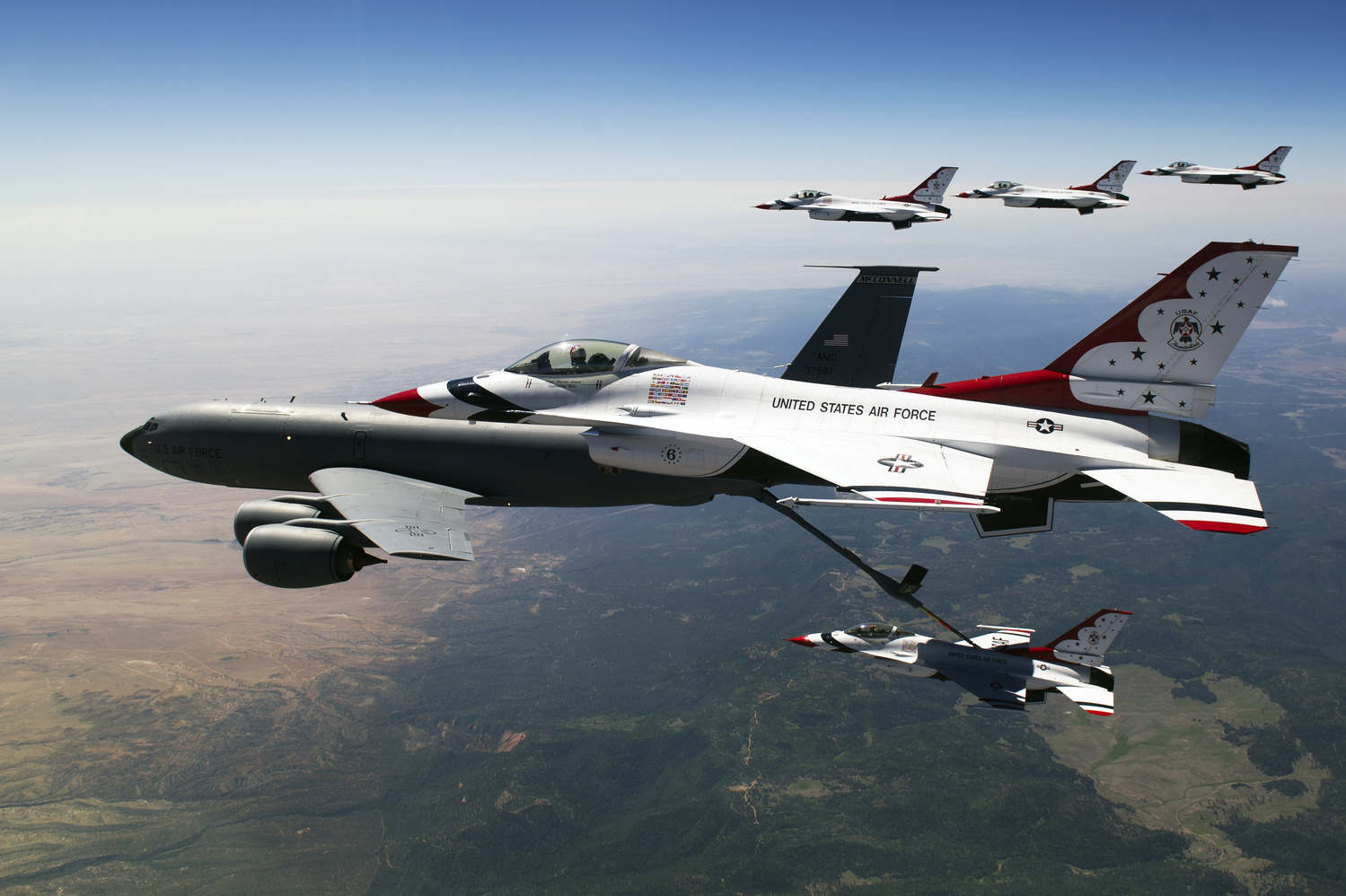It's hard to imagine someone not describing what Sergeant Larry Reid Jr. does as a dream job. Once you see what he does, the images he captures and the joy on his face as he explains his process, part of you (no matter who you are) kind of wishes you were him. With two cameras strapped around his neck firing shots off while his pilot banks at seven G's, Sergeant Reid is living the dream.
I met Sergeant Reid completely by chance. I was in Arizona with my friend Blair Bunting helping him with a project for the Air Force Thunderbirds (which included getting a ride in a Thunderbird F16 and sustaining 9 G's) when I saw Reid moving around, Nikon in hand, documenting everything that was happening. On this same day, Arizona Cardinals wide receiver Larry Fitzgerald was also scheduled to take a trip in an F16, so it was only natural that the Air Force would send a journalist to capture all the moments. I struck up a conversation with Reid, curious how one came into his position.
After he briefly explained his job to me (and laughed at expression- my jaw slack in amazement), I asked him if he and the Air Force would be able to grant me just a few minutes to allow me to capture his story on video. They happily complied, and what ensued was the retelling of Sergeant Reid's story, full of mind-numbing detail. Without realizing it, he explains his nearly superhuman ability to maintain calm amongst a swirling torrent of pressue- both mental and physical.
Each photo is bursting with emotion. Real, unstaged, in-the-moment, true emotion. What's more, his images take us viewers to places we have never been and view moments in time few of us have ever experienced or will ever experience... and that's just on the ground! When Reid takes to the sky, we are met with photos that are truly magical and challenge what we believe we could all be capable.
"It's just amazing what I get to capture, looking through my viewfinder," Reid told me. When he is up with the team and assigned to capture a photo, often that photo they are trying to get is the team flying over a specific monument, such as the Statue of Liberty or, above, Pike's Peak. "When we are on a dedicated photo mission, we may have one pass. One opportunity... over a monument that we might not have the opportunity to go back over." But it is in those moments that Reid shines.
"The rewarding part is when my commander comes up to me after a mission and says 'Larry, let me see the images.'" Sergeant Reid told me, a smile on his face. "And when I can deliver each and every time, that opens doors for more opportunities to go up there." Why is that important? For a couple reasons. One, it is a dying art. With more one-seaters taking over the Air Force and the two-seaters being phased out, it's only a matter of time before taking photos in this manner will no longer be possible.
That is a day that Sergeant Reid does not want to see come to pass. "It's great to be able to showcase this and show our leaders, 'Look, this is what we can do with this capability. We can keep these two-seaters around so we can tell this aspect of our military mission, showing that precision that our aviators have to go through."
With outstanding photos like the ones he captures, I think he has more than a fair argument to keep the two-seaters alive.
All images by Sergeant Larry Reid Jr., United States Air Force Photojournalist
Special thanks to the United States Air Force and the AF Thunderbirds



















Nice work Jaron! Great, informative story here.
Thank you Mike!
Awesome photos. I would love to ride in one of those jets.
Too awesome. This man truly gets to live a dream most of us had as a kid AND as an adult.
Awesome work Larry! Thanks for sharing!
Amazing work and opportunity !
what a training to be able to shoot in this conditions !!
( I would love to, but I'll probably puke my guts many times !! )
And the result is awesome !
Man that'd be something!
Awsome, what a cool job!
That's amazing! Great video as well.
I work as an Engineer on the F/A-18 EA18G and I wish I could go up in one for a test and shoot some photos :P
Thanks Christian! Larry is an awesome dude. This was a fun shoot.
My dream job! Am hoping to become a photographer for the RAF over here in the UK.
This guy has the coolest job ever! Awesome photos. Not too many people can get the angles and locations like him. Very impressive!
What an entirely eloquent young man. He is an excellent choice as an ambassador of the USAF.
Agreed. It was a real shame I couldn't put everything he said into the video. I have about 40 minutes of great stuff that I wish I could have included but for the sake of time.
I'd gladly watch an extended version! :)
what a great story. that kid has an awesome job and what a great speaker and rep he is for the air force. they should push his stuff more.
This is his last week as a Thunderbird before he is reassigned. They will miss him for sure.
Nice!!!
Killer video Jaron....the best you've produce! Such a cool story
Thanks buddy! I keep trying to top my last production each time I shoot.
If we had to eject, that bag would be coming with me!
Your best video by far Jaron. Fantastic
That camera has got to weigh close to 100lbs going into those turns!
Yes. Plus the weight of his arms haha
I had the chance to Photograph F-4 Phantoms from the back seat while in the Marines with VMFA 212.Here are a few of my Pics
https://www.facebook.com/mike.lawrence.58/media_set?set=a.48486872485931...
Awesome article and video Jaron. I had the pleasure of being on the Thunderbird team in 1987 and 1998 as their photographer. The big difference from then to now is that Sgt. Reid can tell if he got the shot, where I was challenged with changing a roll of 36 exposure Kodachrome multiple times and prayed that I got the shot.
Gigantic mega props to you sir. Using film would incredibly complicate an already complicated situation.
The self-portrait by Sgt. Reid raises real concerns for me as an aerial photographer and strong advocate of aviation safety.
Although Sgt. Reid has a great job and deserves to be showcased for his abilities and the opportunities afforded to him, all the 'coolness' is lost by the simple fact that he is shown with not one but two cameras strapped around his neck.
This is unsafe, dangerous and potentially deadly!
It is also counter to everything I've been taught and currently teach folks I mentor worldwide. Putting a camera around your neck like this introduces the opportunity to have the strap interfer with aircraft and life support systems and will ABSOLUTELY lead to decapitation if the photographer has to eject what could be an otherwise survivable event.
Hand-straps for cameras are made for this exact reason and allow you to keep the camera under control and also ditch it if necessary. Why Sgt. Reid doesn't have a hand-strap on his cameras confounds me and leads me to believe the Air Combat Command safety program is (now) non-existent and that he does not have an experienced mentor who preaches safety, safety, safety. What further concerns me is this entire article and the self-portrait photo showing these straps around his neck was approved for release by the Thunderbirds Public Affairs Office. Talk about setting a bad example at the highest levels.
If you are an aerial photographer, or aspire to be one, DO NOT put a camera around your neck in an ejection seat aircraft!
And... before you ask why I think I'm qualified to weigh in on this subject... here's why. I am a former USAF aerial photographer and Combat Cameraman. I've been fortunate enough to be trained by and work alongside the best in the business. This includes SMSgt. Michael James Haggerty, my mentor, and one of the greatest USAF aerial photographers. I have hundreds of aerial photography hours in ejection seat equipped fighters ranging from the F-16, F-15, F/A-18, F-4 and even F-104, etc. These hours have been accumulated in combat, flight test and evaluation, public relations and training missions.
Again, If you are an aerial photographer, or aspire to be one, DO NOT put a camera around your neck in an ejection seat aircraft!
Well stated Greg and good observation. You are correct, I totally missed it. I too never used a neck strap and only used one camera while in the air. It was hard enough working with one camera let alone use two. As for the Public Affairs Office, it's no shocker that they missed this one. It's quite possible that they were never involved or privy to vetting the story prior to it's release.
Fantastic! Nice work Jaron!
I'd love to do stuff like this.
Great article, looking to cross-train into PA in the future..
Great story! This guy does some amazing work.